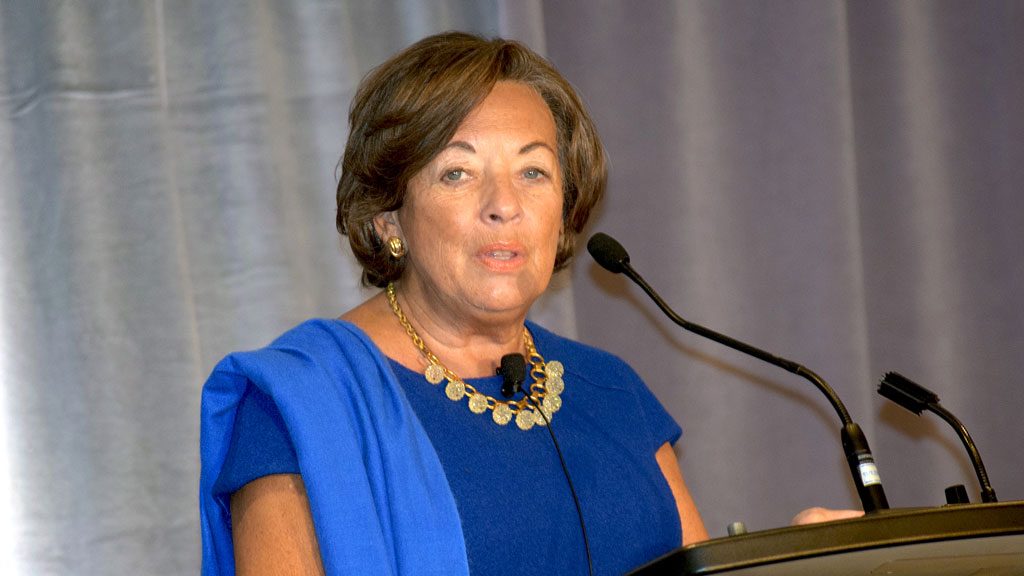Ontario construction stakeholders hailed the recent announcement that the Workplace Safety and Insurance Board (WSIB) has eliminated its unfunded liability (UFL) almost 10 years ahead of its legislated schedule, resulting in a drop in premium rates next year of between 30 to 48 per cent for construction rate groups.
The reduction for all employers across the province averages out to 29.8 per cent. In construction, siding and outside finishing employers will reap the greatest benefits next year, with their premiums dropping 48 per cent.
The retirement of the UFL and the premium reductions were announced by WSIB chair Elizabeth Witmer at the board’s annual general meeting held Sept. 26 in Toronto.
The reduction in premium rates has been estimated to represent a redirection of $1.45 billion into the economy per year starting next year. The Ontario General Contractors Association (OGCA) has calculated that payroll costs will go down two per cent.
“That’s huge,” commented OGCA director of government relations David Frame. “The WSIB premiums go from a six per cent tax on payroll to a four per cent tax on payroll.”
“That is going to create a good deal of monies available for development, for reinvestment,” said OGCA president Clive Thurston. “This is a tremendous, tremendous accomplishment. I couldn’t be prouder of the industry and I want to thank the WSIB for working with us and making this happen.”
In 2009 Ontario’s auditor general reported the UFL — the shortfall between future obligations to pay injured workers and the money available to pay them — had reached a critical stage. The Liberal government of the day enacted legislation requiring WSIB action to address the problem. The UFL stood at $14.2 billion in 2011.
Thurston said the construction sector, including the Construction Employers Coalition, was instrumental in working on a plan to reduce the UFL.
“The industry agreed to continue to pay an increase in its premium rates to get rid of the UFL,” Thurston said. “We have contributed over $15 billion in additional funding to make this happen. It was a partnership between the WSIB and the industry, it was agreed to in a collaborative manner, and so it is a great accomplishment that shows how working together, change can happen.”

WSIB president and CEO Tom Teahen enumerated four drivers that enabled the WSIB to eliminate the UFL early – increased premium revenues, improvements in claims duration, higher investment returns and decreases in lost-time injuries.
As for the reduction in premiums the construction sector will see, Teahen said in an interview, “We hope that helps them with their ability to invest more in health and safety, hire more people and invest in their own improvements in technology and process improvement and efficiency so they can be even more competitive.”
Other rate groups benefiting from major premium reductions will be formwork and demolition, with a drop of 47.4 per cent from 2018 to 2019, inside finishing, with a reduction of 41.6 per cent, home building, with rates dropping 40.2 per cent, and roadbuilding and excavation, also with a reduction of 40.2 per cent.
Sean Reid, vice-president and regional director, Ontario, for the Progressive Contractors Association of Canada, noted the premium savings will average out to 35 per cent across the sector.
“These savings will create new opportunities for Ontario contractors to reinvest in their businesses and create more jobs for Ontario workers,” he said in a statement. “It also takes some of the pressure off construction employers who’ve been burdened with rising materials costs in recent months, due to the ongoing tariff dispute with the United States.”
The Residential Construction Council of Ontario (RESCON) issued a statement praising the contributions of WSIB leadership past and present.
“Credit must be given to former WSIB president and CEO David Marshall, current chair Elizabeth Witmer and current president and CEO Tom Teahen,” said RESCON vice-president Andrew Pariser. “This exciting announcement means employers will keep more money in their businesses and can continue to invest in health and safety, good-paying jobs and Ontario.”
Infrastructure Health and Safety Association president and CEO Enzo Garritano attended the WSIB meeting and noted afterwards the drive to eliminate the UFL that was launched in 2009 coincided with a realization that new approaches were needed to address what was a stagnant health and safety sector. A new era of activism was launched, he said.
“In the last seven or eight years, people have been looking at things differently,” he said. “There was a changeover, with new health and safety management systems that were absent in Ontario.
“So this is all contributing towards this success, where people knew something had to change in order to get at the unfunded liability and improve health and safety, because it was plateauing.”
Ian Cunningham, president of the Council of Ontario Construction Associations, called the developments “very good news” and a “tribute to the efforts of a whole lot of different people” including the WSIB in working closely with employers.
“Construction employers have contributed significantly by contributing to the UFL elimination fund with their premiums, and working with the WSIB to get workers back to work,” he said.
An important next step for the construction sector, Cunningham said, is working on implementing the WSIB’s rate framework reform, due to come into effect in 2020.
Watch this site for continuing coverage of the WSIB’s elimination of its Unfunded Liability. Was it accomplished on the backs of injured workers? The DCN investigates.
WSIB premium reductions for 2019
|
Construction Rate Group |
% change from 2018 to 2019 |
|
Inside Finishing |
-41.6% |
|
ICI and Condo construction |
-37.8% |
|
Masonry |
-35.6% |
|
Home building |
-40.2% |
|
Electrical and Incidental Cons. Services |
-34.6% |
|
Mechanical and Sheet Metal |
-33.1% |
|
Roadbuilding and Excavating |
-40.2% |
|
Roofing |
-34.6% |
|
Heavy Civil |
-38.0% |
|
Millwrighting and Welding |
-30.6% |
|
Formwork and Demolition |
-47.4% |
|
Siding and Outside Finishing |
-48.0% |











I am hoping that there will be some comment from injured Workers and advocates in an upcoming story.
Hi Bob,
Yes, we are currently working on a reaction story from the labour side.
Vince Versace
DCN & JOC national editor